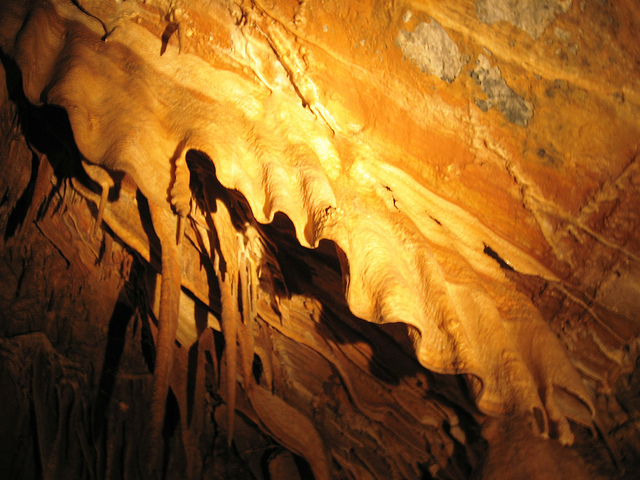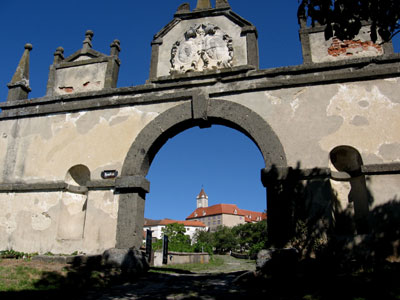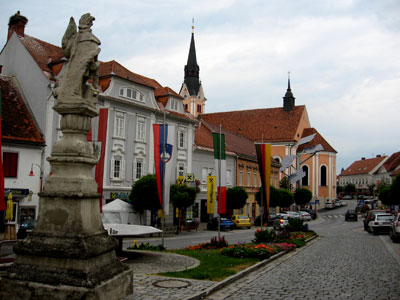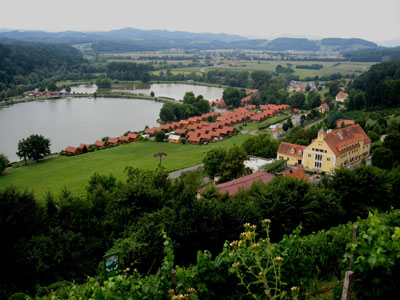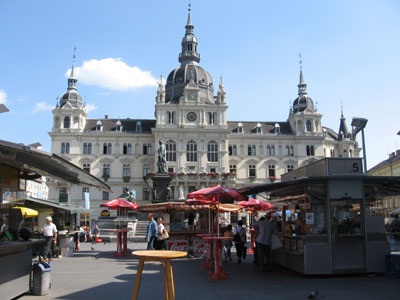The cave consists of several portions: right beside the entrance is the so-called “Marteldome”, a 45 m deep vertical shaft that the couple initially used to access the cave. Another large cavernous space is the “Fantasiehalle” (Hall of Phantasy), a space with a length of 120 metes, a width of 85 metres and a height of 15 metres, which features a great variety of interestingly shaped dripstones. Fritz Geissler pointed out limestone corals; delicate white and coloured limestone curtains, and stalagmites and stalactites that were in various stages of growing together until they form fully connected columns.

Amazing limestone formations
He explained that the age of the stones varies widely, some of the younger ones could be tens of thousands of years old, while the older massive columns would date back many millions of years. Fritz Geissler mentioned that Hermann Hofer often said that “1000 human years are but a single second in the life of this cave”, a comment that will certainly put our daily human concerns and worries into a broader perspective. Our guide also pointed out bones of a cave bear, an extinct mammal species about 30% bigger than the Brown Bear which became extinct after the last ice age about 20,000 years ago. Large colonies of bats still inhabit this cave.

Limestone corals
In 1955 Hermann and Regine Hofer finally discovered the “Zauberreich” (Enchanted Kingdom), a cavern that features an entire selection of magical royalty-inspired limestone structures, including a king, a queen, some knights and even a royal lapdog. Not far away is a huge ice-cream shaped limestone cone whose story is also fascinating: Fritz Geissler elaborated that a wealthy American man once wanted to buy the mighty dripstone, proposed to pay a huge sum of money for it and to drill a vertical tunnel straight through the mountain to extricate the dripstone. But the cave’s owners, Hermann and Regine Hofer, both deeply religious and modest people, not surprisingly rejected the generous offer out of hand. The integrity of the cave was more important to them than material gain.

A giant icecream cone – the Monument Stone
We still continued our walk downwards and finally reached the deepest part of the publicly accessible portion of the cave: the “Seenparadies” (Lake Paradise), an underground lake and a truly magical sight. A turquoise-green iridescent water surface is punctuated by alabaster-white stalagmites and stalactites, surrounded by stunning vertical walls. Our entire group stopped to take in this breathtaking subterranean lake paradise. We had reached the deepest part of the tour, 135 m below the cave’s entrance and after absorbing this enchanted environment we made our way back up to the surface the same way we came in.

The “Seenparadise” (Lake Paradise)
Our underground adventure had taken about two hours, and on the way up Fritz Geissler told us more about the eccentric yet determined couple that explored this cave and made it accessible to the public. The key phrase he used was that “determination and willpower can literally move mountains”, and Hermann and Regine Hofer’s tenacity led to the discovery of new sections of the cave and it was only their backbreaking excavation work and their construction of the ladders and pathways that made it possible for regular people to visit and enjoy the cave.

Limestone curtains
The Hofers provided public tours of the cave from the 1960s to the 1980s but then closed the cave since visitors were causing so much damage. Fritz Geissler had been one of the visitors of the cave and offered his help to Hermann Hofer in maintaining the cave. His mentor accepted his help and from this point forward Fritz Geissler became Hermann Hofer’s apprentice. In his later years (Hermann Hofer passed away in 2003 at the age of 95), he was looked after by our guide Fritz Geissler and decided to pass his life’s passion, the Katerloch, on to the much younger man who was honoured to continue the legacy.

A memorial to the original explorers, Hermann and Regine Hofer
After extensive renovations in 2004 the Katerloch was finally opened to the public again, and Fritz Geissler’s indepth knowledge and highly developed speaking skills have been making his cave tours a special attraction in the whole region. I had a chance to interview this remarkable young man afterwards and he also mentioned that he is now offering a mental strength training program that integrates the cave experience into the training sessions. Our entire group was quite taken with our cave adventure and the enthusiastic and informative presentation of our guide, and many people lingered for a while to chat and connect.

Our guide Fritz Geissler holds up a bone of a cave bear
The visit to the Katerloch was the perfect introduction to my planned hike tomorrow: a hike though the adjoining Raabklamm, a deep river gorge which is framed by the very mountains that hold these caves. So after a tasty barbecue at my friends Andrea and Herbert’s place that featured delicious pork chops and a young kitten chasing a pet rabbit, I rested up for a big hiking tour tomorrow.
